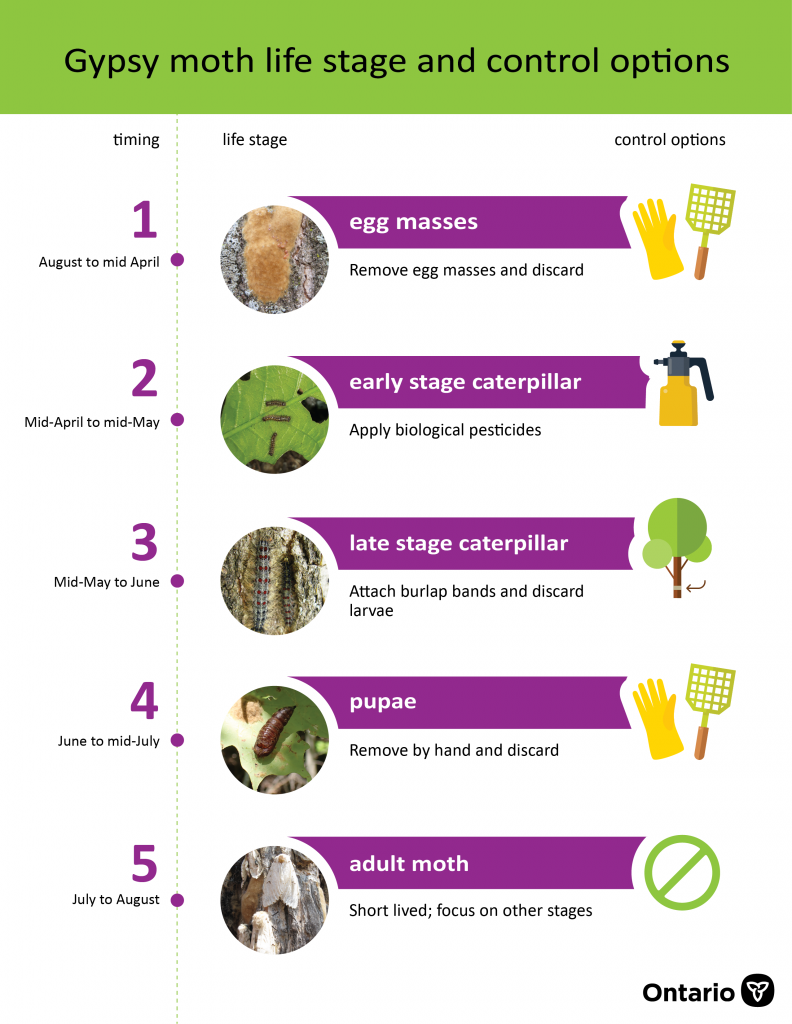Ontario is currently experiencing an outbreak of gypsy* moths, and while Muskoka is on the fringe of the outbreak, according to the Ministry of Natural Resources and Forestry (MNRF), sightings have been reported by homeowners across the region.

(*Note: The common name for the Lymantria dispar dispar is included for clarity, but due to the offensive nature of the name’s origin, this article will refer to the moths using their scientific name.)
Lymantria dispar dispar (LDD) caterpillars are an invasive species that feed on a wide range of deciduous trees as well as some coniferous trees, causing significant defoliation. They tend to prefer oak, poplar and birch, but the moths have been found on as many as 500 species of trees. LDD moths spread by laying egg masses on trees as well as objects like vehicles, firewood, outdoor furniture and fences. In the larval stage, a single LDD moth caterpillar can consume an average of one square metre of leaves, according to the Government of Canada, killing some trees and making others vulnerable to secondary infestations and other risks.
Populations of the invasive moth typically surge every seven to 10 years followed by a major dip in numbers after a three- to five-year infestation, according to the MNRF. An outbreak of the moths was recorded in parts of Ontario in 2019 and worsened the following year. Across the province, defoliation caused by LDD moths rose from 47,203 hectares in 2019 to 586,385 hectares in 2020, according to the Ontario government.

“In the summer of 2020, MNRF conducted aerial and ground surveys to determine the severity of the outbreak, and what areas will be hardest hit,” said Jolanta Kowalski, senior media relations officer for the MNRF. “Muskoka is currently just on the fringe of the outbreak. It will be included in our monitoring program this season.”
The outbreak is currently hitting southern and eastern Ontario as well as the Sudbury area the hardest, Kowalski said. The government has mapped 2020 defoliation as well as projected defoliation for 2021, but no matter the location, there are a few ways to help address infestations:
- Homeowners can deal with egg masses by scraping them into a container full of soapy water.
- Soapy water can also kill the caterpillars, and one trick to help address them is to wrap affected trees with a piece of burlap, wait for caterpillars to hide in the material and then submerge it in water and soap.
- Caterpillars can also be crushed, but contact with the hairs of LDD moth caterpillars can cause skin irritation so it’s best to wear gloves when dealing with them directly.
For more information on LDD moths, see the graphic below and visit the Government of Ontario website. Photo credits: “Lymantria dispar” by Patrick Reijnders is licensed under CC BY-SA 3.0, “IMGP7417” by boviate is licensed under CC BY-SA 2.0.









